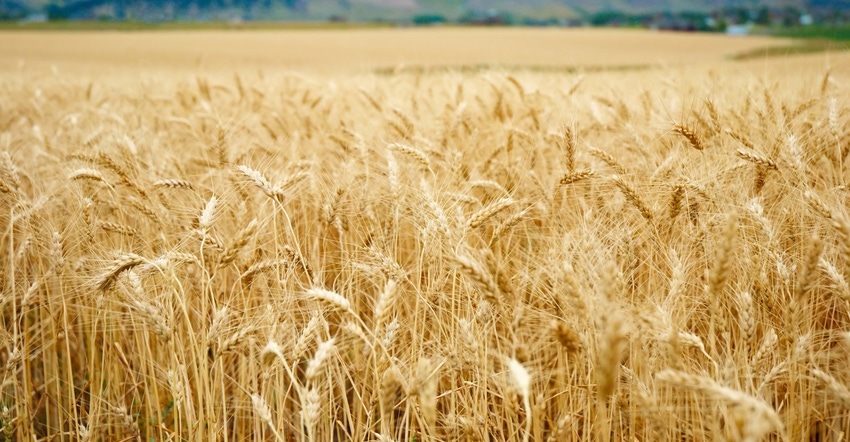October 23, 2020

Farm Progress is rounding up a few news items from Montana State University Extension, where the fall of 2020 has been busy. From a new book exploring the history of wheat, to news of a Nobel that’s sparking greater interest in black holes, the university covers a range of topics.
First up is news that Cathy Zabinski, a professor in the MSU Department of Land Resources and Environmental Sciences, has branched out to write a new book on the history of wheat. The new book, "Amber Waves: The Extraordinary Biography of Wheat, From Wild Grass to World Megacrop," was published in September and is a breakout work for this professor, who spends most of her time working on soil ecology.
Zabinski took a sabbatical to write the book, which forced her to look at writing in new ways, mainly to connect with the nonscience reader about a specific topic. “I thought learning about a new topic could be a really good way to keep in mind this process of discovery and communicating to an audience who is learning about that topic, just as I am,” she says in a recent media announcement.
Her own work dovetailed with the book. Zabinski has studied soil ecology and has worked in some extreme environments, including metal contaminated areas and in Yellowstone National Park, where the soil ecology is extreme. Over hundreds of thousands of years, plants in Yellowstone have adjusted to fit with ecosystems their predecessors couldn’t. “Amber Waves” explores how wheat has done the same, evolving from a wild grass to one of the world's most harvested agricultural crops.
Along the way, Zabinski was able to explore a range of fields she was unfamiliar with, reading up on archaeology and anthropology as well as the history of agriculture and society in early civilizations.
Food service buys
A university campus food service purchases and consumes a lot of food, and in 2020, 4-H market livestock exhibitors benefited from those buys. For the fifth summer, MSU Culinary Services attended youth livestock auctions around the state and purchased 4-H animals to feed MSU students in its dining halls.
This year that meant visiting nine county fairs — some virtual — across Montana to buy 21 pigs and two goats from 4-H and FFA members. They also purchased 32 steers and two cull cows from the Steer-A-Year program in the MSU College of Agriculture. Rich Huffman, director, Culinary Services, says his department also expects to buy 30 to 50 lambs from the College of Agriculture by year end.
The animals are butchered at locally owned meat processors across the state and their meat is currently being served in MSU’s Rendezvous Dining Pavilion and Miller Dining Commons. Kara Landolfi, supply chain manager for Culinary Services, says the meat will be served in a variety of cuts and dishes ranging from baby back ribs to sweet-and-sour lamb meatballs, from pork belly sliders to tacos.
And the Emmy goes to …
Four graduates of MSU’s Science and Natural History Filmmaking program have received a national Emmy award for documentary cinematography for a series about Yellowstone National Park and its impact on the region. The four-part series aired in 2019 on the Smithsonian Channel.
Dawson Dunning, Jeff Reed, Rick Smith and Thomas Winston, all with Bozeman-based Grizzly Creek Films, won the award for their work on ��“Epic Yellowstone.” Adds Winston: “We were happy to be nominated, but cinematography is a very hard category, so we were shocked when we won.”
The four segments in the Emmy-winning series include “Fire and Ice,” which begins and ends with a bobcat’s quest to hunt waterfowl on the Madison River; “Return of the Predators,” which looks at the impact of wolves and grizzlies; “Life on the Wing,” which showcases mountain bluebirds and dragonflies; and “Down the River Wild,” which illustrates the origin and impact of the Yellowstone River.
Tribal health care access
Health care access in remote areas is challenging enough given the distance — but what if you don’t even have money for gas to make the trip? That was a challenge facing many in the Apsáalooke (Crow) Nation of rural southeastern Montana, so Alma McCormick, a member of the Nation and executive director of Messengers for Health, started a research partnership between MSU and Crow community members.
She notes that depending on where people live in the tribal community, a trip to Billings (Mont.) for care could be more than 100 miles. And for those with chronic illnesses, including diabetes or cancer, who require regular treatment, it can be a significant challenge.
To help, McCormick and Suzanne Held, community health professor at MSU’s College of Education, Health and Human Development, applied for grant funding to provide gas cards for those at Crow who need fuel to get to their appointments. Now, Messengers for Health, a nonprofit, is distributing gas cards in increments of $10 and $20 to those in need. To date, Held says about $3,000 in gas cards have been distributed to about 100 Crow community members.
The gas cards are made possible by a $10,000 grant from the state of Montana through its COVID-19 relief funds. Coronavirus has exacerbated the challenge of transportation for treatment. In the past, Crow members might be driven to appointments or share rides but that's more challenging now.
Source: Montana State University, which is solely responsible for the information provided and is wholly owned by the source. Informa Business Media and all its subsidiaries are not responsible for any of the content contained in this information asset.
You May Also Like




